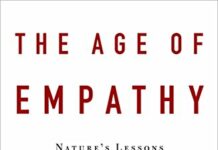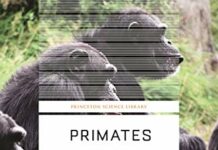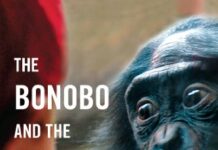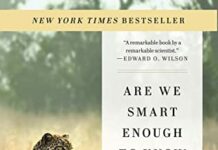
Ebook Info
- Published: 2017
- Number of pages: 352 pages
- Format: PDF
- File Size: 4.05 MB
- Authors: Frans de Waal
Description
A New York Times bestseller: “A passionate and convincing case for the sophistication of nonhuman minds.” ―Alison Gopnik, The AtlanticHailed as a classic, Are We Smart Enough to Know How Smart Animals Are? explores the oddities and complexities of animal cognition―in crows, dolphins, parrots, sheep, wasps, bats, chimpanzees, and bonobos―to reveal how smart animals really are, and how we’ve underestimated their abilities for too long. Did you know that octopuses use coconut shells as tools, that elephants classify humans by gender and language, and that there is a young male chimpanzee at Kyoto University whose flash memory puts that of humans to shame? Fascinating, entertaining, and deeply informed, de Waal’s landmark work will convince you to rethink everything you thought you knew about animal―and human―intelligence. 32 illlustrations
User’s Reviews
Editorial Reviews: Review “The book is not only full of information and thought-provoking, it’s also a lot of fun to read.” ― Nancy Szokan, Washington Post”Astonishing…has the makings of a classic―and is one fascinating read.” ― People”Walks us through research revealing what a wide range of animal species are actually capable of…[I]t all deals a pretty fierce wallop to our sense of specialness.” ― Jon Mooallem, New York Times Book Review”A thoughtful and easy read, packed with information stemming from detailed empirical research, and one of de Waal’s most comparative works that goes well beyond the world of nonhuman primates with whom he’s most familiar.” ― Marc Bekoff, Psychology Today”A beautifully written and delightfully conceived popular science book, written by an eminent researcher who has dedicated his career to making the general public aware of just how smart animals are.” ― Nicola Clayton, Science”If you are at all interested in what it is to be an animal, human or otherwise, you should read this book.” ― The Guardian”This is a remarkable book by a remarkable scientist. Drawing on a growing body of research including his own, de Waal shows that animals, from elephants and chimpanzees to the lowly invertebrates, are not only smarter than we thought, but also engaged in forms of thought we have only begun to understand.” ― Edward O. Wilson, University Professor Emeritus, Harvard University”Are We Smart Enough to Know How Smart Animals Are? will completely change your perceptions of the abilities of animals. This book takes the reader on a fascinating journey of discovery into the world of animal problem-solving.” ― Temple Grandin, author of Animals in Translation and Animals Make Us Human”So, are we ‘smart enough to know how smart animals are’? The question will occur to you many times as you read Frans de Waal’s remarkable distillations of science in this astonishingly broad-spectrum book. I guarantee one thing: readers come away a lot smarter. As this book shows, we are here on Planet Earth with plenty of intelligent company.” ― Carl Safina, author of Beyond Words: What Animals Think and Feel About the Author Frans de Waal, author of Mama’s Last Hug, is C. H. Candler Professor Emeritus of Primate Behavior at Emory University and the former director of the Living Links Center at the Yerkes National Primate Research Center. He lives in Atlanta, Georgia.
Reviews from Amazon users which were colected at the time this book was published on the website:
⭐Primatologist Frans de Waal has made a career out of pounding his head against the rugged wall of human exceptionalism — the belief that humans are the only species that is conscious, self-aware, rational, cooperative, goal-oriented, empathetic, and so on. This wall of calcified grandiosity has resisted change for a long time, and has inspired an abusive relationship with the rest of the family of life. With his new book, Are We Smart Enough to Know How Smart Animals Are?, de Waal has launched a new assault on the cult of exceptionalism.In the 1970s, when de Waal was in college, behavioral psychology was the hot trend. It asserted that animals were mindless, machine-like organisms that did nothing more than robotically respond to stimuli with responses. Animals were incapable of cognition — knowing based on perception and judgment. They could not have desires or intentions. Many scholars remain reluctant to consider the possibility that animals possess various forms of intelligence. Whoops, I meant non-human animals. In our culture, the two categories of fauna are humans and animals (not wombats and non-wombats).In the last 20 years, new research has been inspiring doubt in many long-held beliefs, including the notion that rationality is exclusively human. Yet “animal cognition” is still an obscene four-letter word, a diabolical heresy. Smart scholars wait until they have tenure before they come out of the closet and study it.The illusion of exceptionalism has deep roots. By the time children reach the age of 8 or 10, their worldviews are largely solidified for the rest of their lives. The culture constantly reinforces this worldview, and only a few can summon the power to question it. So, youngsters absorb the worldview, grow up, and raise their children with it, generation after generation. Entrenched belief is immune to conflicting evidence.Humans are extremely proud of our complex language and abstract thought, but these are just two tools in a big box of mental functions used by animals. De Waal believes that some species use forms of intelligence that we are still unaware of — intelligence beyond our imagination. The absolute bottom line for any species is basic survival, and ants and termites excel at this. No animal needs alphabets, numbers, or glowing screens.Irene Pepperberg had a parrot named Alex, who was remarkably capable of advanced cognition. When she pointed at a key, Alex said “key.” He pronounced words precisely. He could add numbers. Alex didn’t just memorize names, he could listen to questions, think, and answer correctly. He was asked, “What color is corn?” when no corn was present. “Yellow,” he replied.Other birds are also extremely smart. “The Clark’s nutcracker, in the fall, stores more than twenty thousand pine nuts, in hundreds of different locations distributed over many square miles; then in winter and spring it manages to recover the majority of them.” Could you do that?Crows, jays, magpies, and ravens are corvids, “a family that has begun to challenge the cognitive supremacy of primates.” One biologist caught and banded many crows, which really pissed them off. They recognized him wherever he went, and they regularly scolded and dive-bombed him.Ayumu the chimp was trained to use a touchscreen. On the screen, a number appeared for a quarter second, then another, in a rapid sequence. Ayumu could remember the sequence of numbers, and then tap them in the correct order. Without practice, he was far better than any human at memory tests — even a memory expert who could remember the sequence of cards in a deck. Harrumph! The supremacists soiled their britches and muttered obscenities. Eventually, a frantic researcher practiced, practiced, and practiced and was finally able to score as well as a chimpanzee.In Japan, chimps were taught a computer game, similar to rock-paper-scissors, which required them to anticipate their opponent’s choices. “The chimps outperformed the humans, reaching optimal performance more quickly and completely than members of our own species.”Like many social animals, primates excel at imitation and conformity, which can have great survival value. Youngsters note what their mothers eat, and what they avoid. Chimps readily imitate the behavior of high status chimps, but not low status ones. When apes are raised in a human home, they are as good at imitating humans as children are. They “spontaneously learn to brush their teeth, ride bicycles, light fires, drive golf carts, eat with a knife and fork, peel potatoes, and mop the floor.”Humans are pathological conformists, abandoning personal preferences when they conflict with the current whims of the majority, whims that are typically manufactured by a slimy mob of marketing shysters. When a celebrity dyes her hair pink, her fans do too. Respectable people must travel everywhere in gas guzzling motorized wheelchairs — bicyclists, bus riders, and walkers are low status slugs. Mindless imitation is the life force of consumer society, and the death force of Earth’s biosphere.When de Waal gives a talk on primate intelligence, he is frequently asked, “What sets humans apart?” Consider an iceberg, he responds. Almost all of it is submerged, only a wee tip is visible above the surface. We have many cognitive, emotional, and behavioral similarities with our primate relatives, and a few dozen differences — the tip. Academia focuses most attention on the tip alone. “Mirror, mirror on the wall, who is the smartest of them all?”Animal intelligence books annoy me. Why do we need scientists to inform us that animals are not robots? Wild people, and others who live close to nature, never doubt the powerful intelligence of deer, ravens, foxes, and weasels. I know outdoor living. I have watched healthy wild animals survive long frigid winters without tools, fire, or clothing — a way of life that would promptly kill me.We are like fish out of water, space aliens. The best way to discover the intelligence and coherence of the family of life is to abandon our climate-controlled cubicles and go back home to the wild. But there are way too many of us. Books and videos cannot substitute for fulltime direct experience. It’s no fun being a space alien. The Koyukon tell us “Every animal knows way more than you do.” A shaman once told Knud Rasmussen “True wisdom is only to be found far away from people, out in the great solitude.”De Waal’s book jabbers a lot about experiments done in zoos and research centers, on enslaved animals. I’m not a fan of animal imprisonment. I’m a fan of wildness and freedom. The ancestors of chimps and bonobos have lived in the same place for millions of years without trashing it — a demonstration of profound intelligence. Send the researchers to the rainforest, so we can learn from our brilliant relatives, and rigorously question our entrenched beliefs.There is an enormous quirk in this book. The core premise is that humans are a highly intelligent species, and that the other animals are not as dumb as we think. Are ants seriously destabilizing the climate? Are termites acidifying the oceans? Are chimps sending billions of tons of topsoil into the sea? In this discourse on animal intelligence, the fact that human animals are knowingly bludgeoning the planet is never once acknowledged.De Waal says, “Cognition is the mental transformation of sensory input into knowledge about the environment and the successful application of this knowledge.” Cognition is about the process of acquiring and applying knowledge. “Intelligence refers more to the ability to do it successfully.” Among the propeller heads of science, “success” includes the bad juju of overpopulation, overshoot, and overconsumption. My definition of success requires long-term ecological sustainability.
⭐Are We Smart Enough to Know How Smart Animals Are? By Frans de Waal“Are We Smart Enough to Know How Smart Animals Are?” is an insightful look at animal intelligence backed up by evidence from controlled experiments. Dutch/American biologist with a Ph.D. in zoology and ethology and author of Our Inner Ape and others, Frans de Waal, takes the reader on a journey of the sophistication of nonhuman minds. This entertaining 352-page book includes the following nine chapters: 1. Magic Wells, 2. A Tale of Two Schools, 3. Cognitive Ripples, 4. Talk to Me, 5. The Measure of all Things, 6. Social Skills, 7. Time Will Tell, 8. Of Mirrors and Jars, and 9. Evolutionary Cognition.Positives:1. Engaging and well-written book that is accessible to the masses.2. A fascinating topic in the hands of a subject matter expert, nonhuman cognition.3. Entertaining and insightful. The book is easy to follow. Professor de Waal is fair and even handed. He is careful to not oversell nonhuman cognition while providing a mixture of stories, experiments and observations to back his points. “I will pick and choose from among many discoveries, species, and scientists, so as to convey the excitement of the past twenty years.”4. Includes many sketches that complement the excellent narrative.5. Introduces and explains key new terms. “Umwelt stresses an organism’s self-centered, subjective world, which represents only a small tranche of all available worlds.”6. Does a wonderful job of explaining the most important topic of this book, animal cognition. “No wonder Griffin became an early champion of animal cognition—a term considered an oxymoron until well into the 1980s—because what else is cognition but information processing? Cognition is the mental transformation of sensory input into knowledge about the environment and the flexible application of this knowledge.” “While the term cognition refers to the process of doing this, intelligence refers more to the ability to do it successfully.”7. A look into experimental science. “The credo of experimental science remains that an absence of evidence is not evidence of absence.”8. One of the recurring themes of this wonderful book is the importance of conducting well-constructed experiments. “Their earlier poor performance had had more to do with the way they were tested than with their mental powers.” “The challenge is to find tests that fit an animal’s temperament, interests, anatomy, and sensory capacities.”9. A fascinating look at the field of evolutionary cognition. “The field of evolutionary cognition requires us to consider every species in full.”10. One of the most important topics covered is the notion of continuity. “It is far more logical to assume continuity in every domain, Griffin said, echoing Charles Darwin’s well-known observation that the mental difference between humans and other animals is one of degree rather than kind.”11. Explains key differences between behaviorism and ethology. “The difference between behaviorism and ethology has always been one of human-controlled versus natural behavior. Behaviorists sought to dictate behavior by placing animals in barren environments in which they could do little else than what the experimenter wanted.”12. The book provides interesting examples that includes animals beyond de Waal’s expertise of primates. “With animals such as chimpanzees, elephants, and crows, for which we have ample evidence of complex cognition, we really do not need to start at zero every time we are struck by seemingly smart behavior.”13. Provocative questions. Do animals have culture? Find out.14. Provides evidence for animal cognition. “A century ago Wolfgang Köhler set the stage for animal cognition research by demonstrating that apes can solve problems in their heads by means of a flash of insight, before enacting the solution.” “Apes do not just search for tools for specific occasions; they actually fabricate them.”15. The pioneers of animal cognition. “Nadia Ladygina-Kohts was a pioneer in animal cognition, who studied not only primates but also parrots, such as this macaw. Working in Moscow at around the same time that Köhler conducted his research, she remains far less known.”16. The amazing story of Ayumu. “Ayumu’s photographic memory allows him to quickly tap a series of numbers on a touchscreen in the right order, even though the numbers disappear in the blink of an eye. That humans cannot keep up with this young ape has upset some psychologists.”17. An interesting look at social skills. “The cooperative pulling paradigm, as it is known, has been applied to monkeys, hyenas, parrots, rooks, elephants, and so on.” “In the end, we found proof in the pudding that chimpanzees are highly cooperative. They have no trouble whatsoever regulating and dampening strife for the sake of achieving shared outcomes.”18. Do animals plan ahead? “This study was quite ingenious and included a few additional controls, leading the authors to conclude that jays recall what items they have put where and at what point in time.” “Lisala, a bonobo, carries a heavy rock on a long trek toward a place where she knows there are nuts. After collecting the nuts, she continues her trek to the only large slab of rock in the area, where she employs her rock as a hammer to crack the nuts. Picking up a tool so long in advance suggests planning.”19. The intelligence of elephants. “In short, elephants make sophisticated distinctions regarding potential enemies to the point that they classify our own species based on language, age, and gender. How they do so is not entirely clear, but studies like these are beginning to scratch the surface of one of the most enigmatic minds on the planet.”20. The three divided attitudes on animal cognition: slayers, skeptics, and the proponents.21. Notes and bibliography included.Negatives:1. The scientific process needed to be explained in more detail and specifically how it relates to the study of primates. An appendix explaining de Waal’s overall scientific approach would have been helpful.2. Lacks supplementary visual materials such as diagrams, charts and graphs. A chart depicting the different types of primates with key statistics as an example. Maps showing where the main subjects come from.3. On the topic of neuroscience a little more depth was warranted. Once again, visual material would have complemented the narrative.4. The format could have been enhanced to highlight the most noteworthy observations or facts.In summary, this was a very entertaining book. Professor De Waal succeeds in entertaining and educating the public on animal cognition. His mastery of the topic is admirable and is careful to be grounded on the facts and not to oversell an idea. A lot of interesting insights don’t miss this one. I recommend it!Further recommendations: “The Bonobo and the Atheist”, “Our Inner Ape”, “The Age of Empathy”, “Chimpanzee Politics” by the same author, “The Genius of Birds” by Jennifer Ackerman, “Beyond Words: What Animals Think and Feel” by Carl Safina, “The Soul of an Octopus” by Sy Montgomery, “Animal Wise” by Virginia Morell, “Zoobiquity” by Barbara Natterson-Horowitz, “The Secret Lives of Bats” by Merlin Tuttle, and “Last Ape Standing” by Chip Walter.
⭐It has become increasingly clear that many animal species share with us the qualities we once thought made humans unique (such as tool making), and that animals are not just stimulus-responding organisms (as the behaviourists thought) but have emotions, intelligenge, cognition and personalities. The difference between humans and other species is one of degree. I suspect thatpeople who still deny this are trying to justify, consciously or not, the many ways in which we exploit and abuse animals.I hope this book will increase respect for our fellow species. Our destruction of habitats, and increasing meat consumption contribute to the threat to our planet’s very survival, so treating animals better is ultimately to our own benefit (this is not the place to address the moral dimensions).This book is very wll written,and I found the author’s drawings charming. It is absorbing and eye-opening. I wish I could make everybody in the world to read it!
⭐This is an excellent book; should be obligatory reading in schools and for everyone. Reveals most people’s contradictory views of evolution – accepting more or less seamless evolution from worm to man below the neck, but somehow feeling that above the neck (ie the brain) that there is an immense chasm between human intelligence and those of other animals. The book demonstrates with real examples of non-biased (as non-biased as one can be) experiments and observation that many animals and birds have similar intelligence and problem solving skills as man. A riveting read which clarifies many ideas.
⭐Fascinating account of many years of study and research, confirming how intelligent other animals are and blowing away the myths of human exceptionalism. Almost as incredible the lengths that scientists have gone to, to propagate those myths and how they have immediately produced a new one each time they are disproved. In the end we have to conclude that yes we are just animals, like the others and we are going to have to revise the way we regard and treat all the other species that occupy this planet.
⭐I liked the writing style, sometimes covering technical themes but always well explained for the non specialist. The title explains exactly what the subject matter is, and it is informative and indeed amazing. A great read.
⭐Love this book. Hoping to study Biology and reading this book for my personal statement, it is a very interesting read with a lot of good ideas. However, there are a lot of technical terms so may be a struggle for those who have very little biological knowledge.
Keywords
Free Download Are We Smart Enough to Know How Smart Animals Are? in PDF format
Are We Smart Enough to Know How Smart Animals Are? PDF Free Download
Download Are We Smart Enough to Know How Smart Animals Are? 2017 PDF Free
Are We Smart Enough to Know How Smart Animals Are? 2017 PDF Free Download
Download Are We Smart Enough to Know How Smart Animals Are? PDF
Free Download Ebook Are We Smart Enough to Know How Smart Animals Are?




